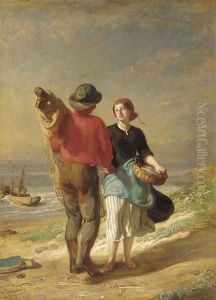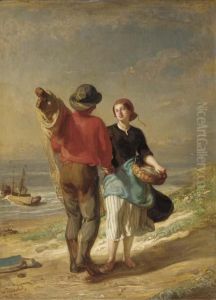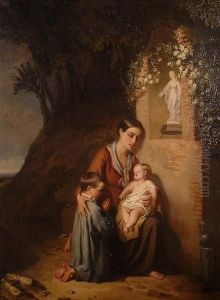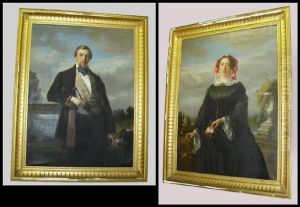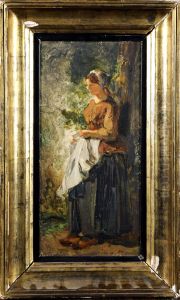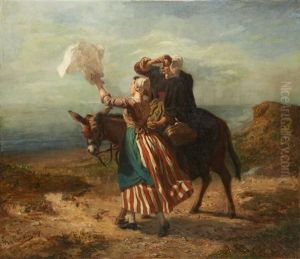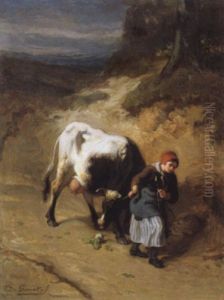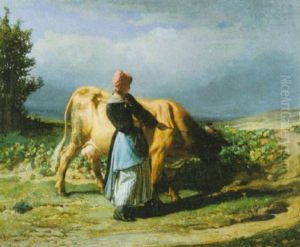Vital De Gronckel Paintings
Vital De Gronckel was a Belgian artist, born in the year 1820 and passing away in 1890. He was a multifaceted figure within the Belgian art scene of the 19th century, known primarily for his contributions as a lithographer, painter, and illustrator. His work reflects the broader movements of Belgian art during his lifetime, particularly the rise of Romanticism and later, the shifts towards Realism.
De Gronckel's early life was marked by a robust artistic education, typical of the era's artists, who often started their training at a young age. He was deeply influenced by the cultural milieu of Belgium at the time, a country that had gained its independence in 1830, when De Gronckel was just ten years old. This period was rich in political and social change, which inevitably seeped into the artistic expressions of Belgian artists, including De Gronckel.
Throughout his career, Vital De Gronckel became known for his detailed lithographs that captured both the mundane and the majestic aspects of Belgian life. His illustrations often depicted scenes of daily life, folklore, and historical events, showcasing his ability to weave narrative and emotion into his works. Notably, his contributions to various publications and projects helped popularize lithography as a key artistic medium in Belgium.
De Gronckel's paintings, on the other hand, were celebrated for their vivid portrayal of scenes and landscapes, imbued with a romantic sensibility that was common among his contemporaries. However, as the 19th century progressed, his style evolved to reflect the more realistic approach that was becoming popular in European art. This shift demonstrated De Gronckel's adaptability and his continuous exploration of new artistic expressions.
Despite his contributions to the Belgian art scene, Vital De Gronckel is not as widely remembered as some of his contemporaries. Yet, for art historians and enthusiasts of 19th-century Belgian art, his work provides invaluable insights into the cultural and social dynamics of Belgium during a period of significant change. De Gronckel's legacy, though perhaps understated, is preserved in the collections of Belgian museums and in the pages of art history, where his work continues to be studied and appreciated.
